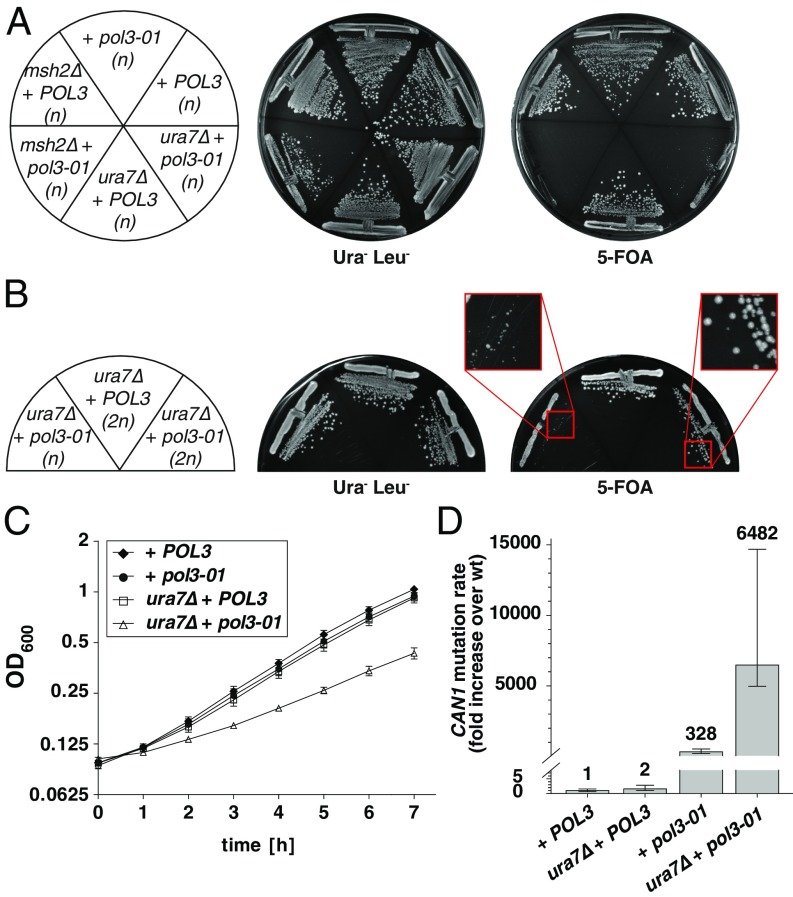Fig. 2.
Inactivation of URA7 in Pol3 proofreading-defective background (pol3-01) results in severe growth defects and synergistic increases in mutation rates. (A) Plasmid shuffling strains pol3Δ, pol3Δ ura7Δ, and pol3Δ msh2Δ [all haploids (n) complemented with a WT POL3-URA3 plasmid] were transformed with either WT POL3 or pol3-01 LEU2-plasmids. Transformants were grown on Ura− Leu− SD plates or 5-FOA–containing plates to select against WT POL3-URA3 plasmid. Double-mutant combination msh2Δ + pol3-01 serves as positive control for a synthetic lethal interaction. (B) Haploid (n) or diploid homozygous (2n) pol3Δ ura7Δ mutants expressing either WT POL3 or mutant pol3-01, were grown as in A. (C) Proliferation curves. Diploid homozygous pol3Δ or pol3Δ ura7Δ strains were transformed with either WT POL3 or pol3-01 plasmids. Three independent isogenic strains for each genotype were grown overnight in YPD and diluted next day to OD600 = 0.1 in fresh YPD. Proliferation was followed by OD600 measurements, and the values were plotted as mean ± SD on log2 scale. (D) Quantification of CAN1 inactivation rates in diploid strains hemizygous for CAN1 locus (SI Materials and Methods for additional details) and homozygous for pol3Δ or pol3Δ ura7Δ mutations complemented with POL3 or pol3-01 plasmids. Error bars represent the 95% confidence intervals (CIs) and numbers on top indicate the fold increase in the mutation rate over the WT diploid strain (2.4 × 10−7 CanR mutants per cell division).

